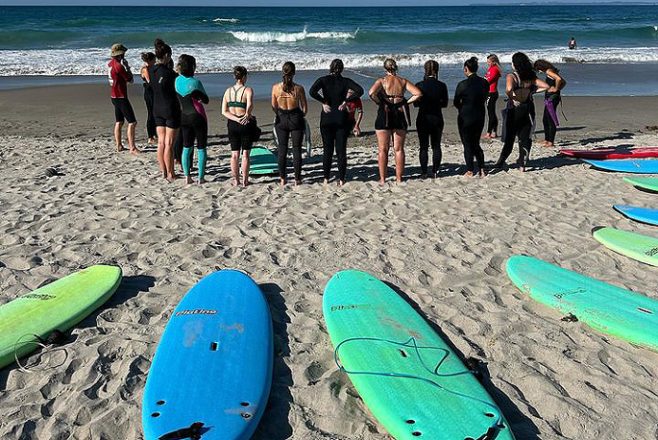The local surfing community is experiencing a significant change thanks to funding from Tū Manawa. This funding has helped Pāpāmoa Boardriders, a surfing club deeply embedded in the surfing culture, to promote inclusivity and empowerment through their initiative, Wahine Wave Jam Days.
Zoe, a committee member of Pāpāmoa Boardriders, says that without the Tū Manawa funding, they wouldn’t have been able to host their Wahine Wave Jam Days. These events offer a safe, fun, and engaging experience for female participants, many of whom are trying surfing for the first time.
The funding has also helped increase the club’s membership and raise awareness in the community about the club’s inclusivity. Zoe credits Sport Bay of Plenty for their help in the funding process, saying they provided valuable feedback to improve their application.
Nick Chambers, General Manager Community Sport and Recreation at Sport Bay of Plenty, says that by supporting initiatives like Wahine Wave Jam Days, they are investing in recreation and breaking down barriers of inclusivity. He believes that this targeted funding can make a real difference in improving community wellbeing.
Looking to the future, Pāpāmoa Boardriders aims to be both inclusive and competitive, providing a space where individuals can achieve their own surfing goals while being part of a community. The Tū Manawa funding has allowed more women to join the club and participate in surfing, regardless of their skill level.
Zoe reflects on the impact of Wahine Wave Jam Days, saying it was wonderful to see the women having fun in the water, often overcoming their own fears. She adds that surfing can lead to personal growth and the development of friendships.
The story of Pāpāmoa Boardriders shows the positive impact that Tū Manawa funding can have in removing barriers to participation in sport and recreation, while also promoting inclusivity, empowerment, and community spirit. The club is paving the way for an inclusive and vibrant surfing culture in Pāpāmoa and beyond.






























































